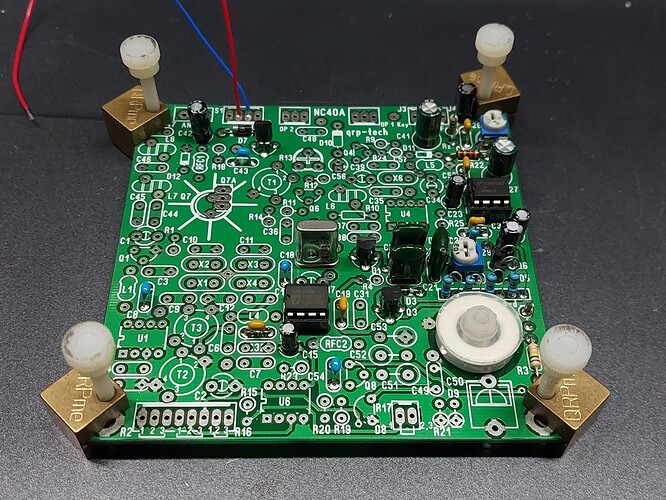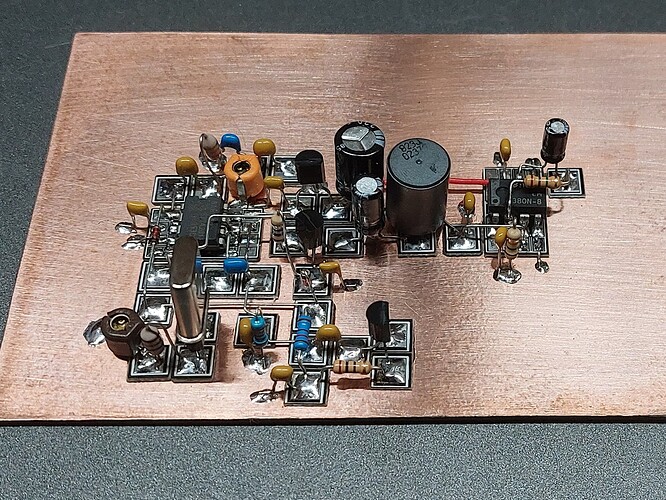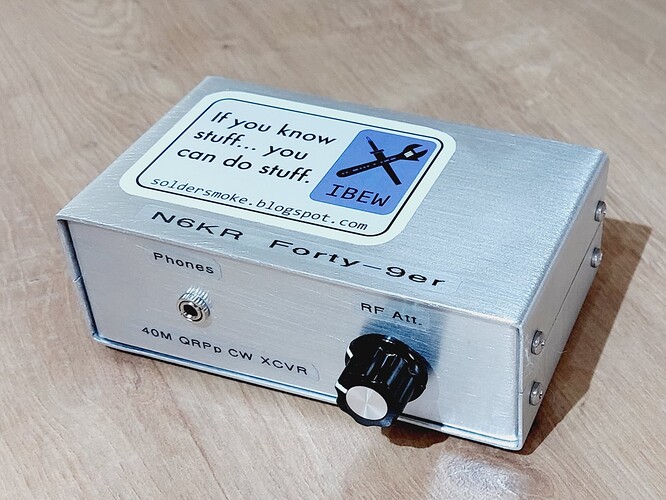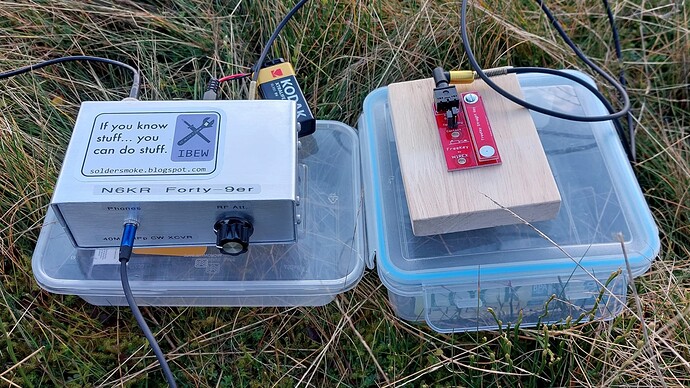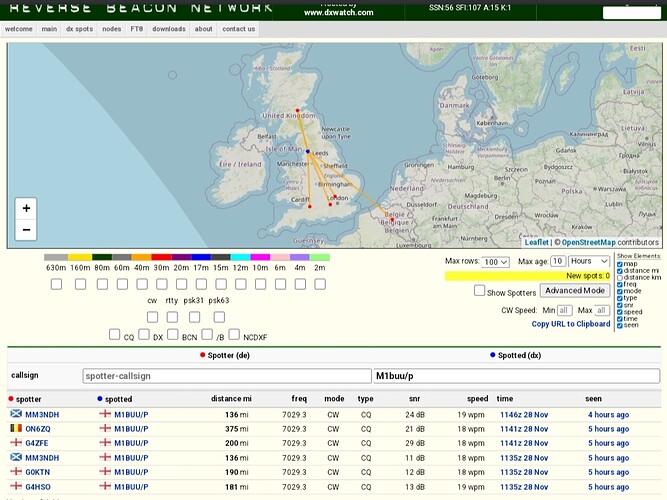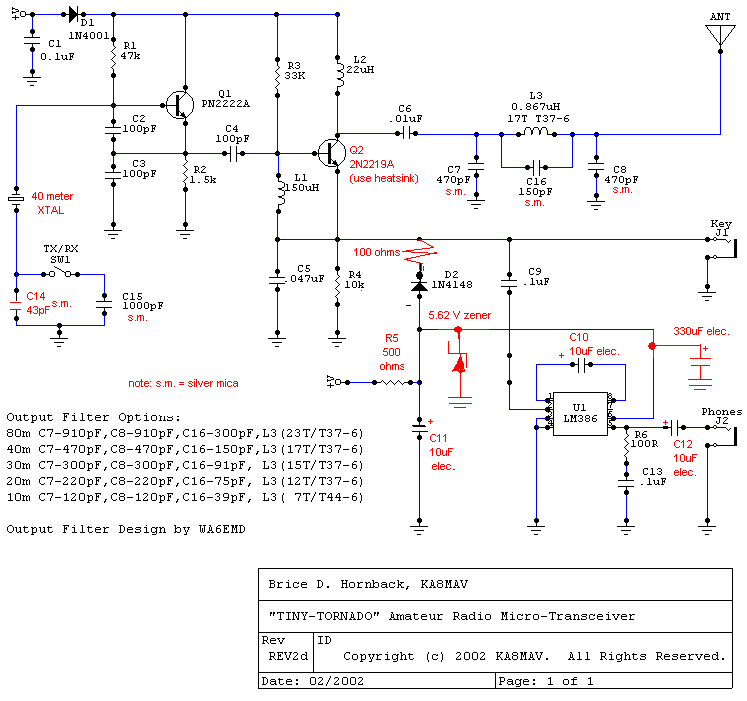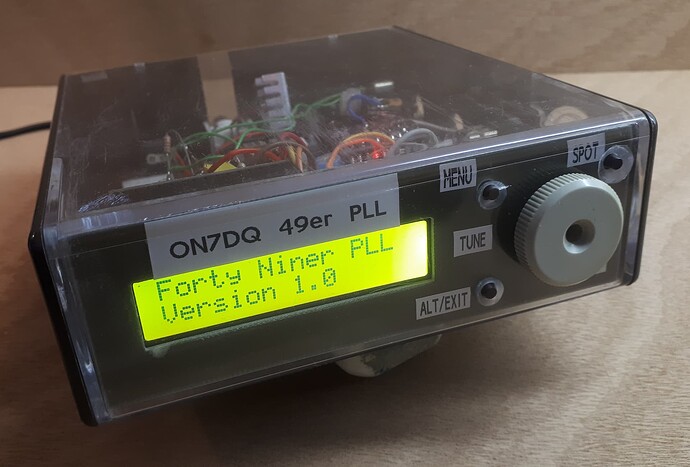At the start of this year I built a Manhattan style N6KR SST-30. I then fell down an N6KR rabbit hole!
I currently have a NorCal 40A (another N6KR design) on my workbench, but it’s a slow moving project.
Whilst researching the NC40A, I found the N6KR Forty-9er. The Forty-9er is a minimalist QRPp crystal controlled CW transceiver for 40m which will run from a 9v battery.
A few weeks ago I began a scratch build Forty-9er project. I used the original article and schematic for authenticity.
The circuit fired up first time and needed no debugging. I did allow myself to change a couple of things from the original design; I used toroids instead of axial chokes and I put a better low pass filter in. I think the use of the toroids instead of axial chokes improved the output power a little. I’m seeing a healthy 0.5w+ from a 9v bench supply.
I fabricated a little case in the same style as the SST from sheet aluminium.
The weather was pretty good today so I took my little Forty-9er, with fresh in the packet Poundland 9v battery to Hutton Roof Crags G/LD-052. I needed a bit of food shopping so figured that I could head to Kendal after my activation to do the shopping there. Another reason to do the activation was to get my teenage son out of the house, to get him some fresh air and daylight!
I knew I would’nt have long to play but I put out a few CQs. I had been interested to see how a minimalist transceiver would work as I haven’t used anything like a Pixie before. I set the TX frequency at 7.02929 in order to try to get callers away from zero beat to give me a bit of tone, however my plan was clearly foiled by modern rigs and their frequency stability and narrow passbands! I worked 3 stations with my little rig before I gave up. I proved the rig worked, however I definitely need to add in some form of RX shift. I was told that I had a few callers, but I simply couldn’t hear them due to zero beating. I guess these old designs without RX offset are just not practical anymore with perfect modern rigs ruling the airwaves.
Keying was total guess work as there is no sidetone! I did seem to light up the RBN a few times, so at least some of my straight key Morse was legible!
So now that I’ve experienced a true Forty-9er, I think that I will add in some RX shift. I think that I’ll leave out the sidetone though, guess work adds to the fun!
73, Colin
